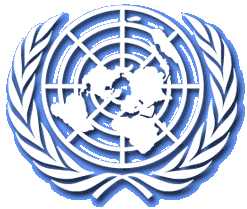Opinion Editorials, February 2008
|
Editorial Note: The following news reports are summaries from original sources. They may also include corrections of Arabic names and political terminology. Comments are in parentheses. |
How the EU Helps Israel to Strangle Gaza
By David Morrison
ccun.org, February 13, 2008
Since 23 January 2008, we have witnessed the extraordinary spectacle of
a mass breakout by Palestinians from their Gaza prison, a breakout made
possible by Hamas blowing up stretches of the Israeli-built border wall
between Gaza and Egypt, near Rafah, and bulldozing other stretches of
it.
The breakout was a reaction to Israel’s strangulation of Gaza, which had
intensified in the preceding weeks with Israel’s closure of the
crossings between Israel and Gaza to the passage of people and goods, on
a more or less permanent basis.
But how can Israel strangle Gaza when there is supposed to be an
international crossing between Gaza and Egypt, a crossing which is not
controlled by Israelis?
Certainly, that was the promise held out in the comprehensive Agreement
on Movement and Access (AMA)
[1], signed more than two years ago, on 15 November 2005, by Israel
and the Palestinian Authority (PA). The first of the six
components of this Agreement was that there would be a crossing between
Gaza and Egypt at Rafah, controlled by the PA and Egypt, on terms set
out in the Agreed Principles for Rafah Crossing Point (APRC) that formed
part of the Agreement. At the time, this was hailed as an historic
step on the road to a Palestinian state – for the first time, it was
said, Palestinians would have access to the outside world free from
Israeli control.
How come then that Israel is still able to strangle Gaza? The
answer is that, thanks to the good offices of the EU, which has a role
in managing the Rafah crossing under the Agreement, Israel has always
had a veto on the opening of the crossing. As we will see, in
practice, whenever Israel doesn’t want the crossing open, the EU doesn’t
open it.
The crossing was open almost every day from 25 November 2005 to 24 June
2006, though not for 24 hours a day as intended (see, for example,
[2]).
However, after 24 June 2006, when an Israeli soldier was captured by
Palestinians, the EU has, at Israel’s insistence, prevented it opening
regularly and has kept it closed completely since 9 June 2007, after
Hamas took control of Gaza.
Another point: the Agreement doesn’t provide for commercial traffic into
Gaza from Egypt via the Rafah crossing, because Israel doesn’t trust
Egypt and the PA to prevent the importation of arms.
Theoretically, it did provide for commercial traffic out of Gaza into
Egypt, but this has never occurred in practice.
Quartet: midwife of AMA
The so-called Middle East Quartet (the US, the EU, Russia and the UN)
was the midwife of the Agreement on Movement and Access (AMA). In
April 2005, the former head of the World Bank, James Wolfensohn, was
appointed Quartet envoy with special responsibility for making
arrangements for Gaza in the event of Israeli “disengagement”, which
took place a few months later in August 2005. The AMA was largely his
work, but Condoleeza Rice (US Secretary of State) and Javier Solana (EU
High Representative for the Common Foreign and Security Policy) were
present to announce it publicly in Jerusalem on 15 November 2005.
Rice said that the Agreement as a whole “is intended to give the
Palestinian people freedom to move, to trade, to live ordinary lives”
[3].
Of its arrangements for a crossing into Egypt, she said:
“First, for the first time since 1967, Palestinians will gain control
over entry and exit from their territory. This will be through an
international crossing at Rafah, whose target opening date is November
25th.”
Solana said of these arrangements:
“This is the first time that a border is opened and not controlled by
the Israelis. … So as you can imagine, this is a very important step
that is the first time that takes place.”
One could be forgiven for thinking that the US and the EU had made
arrangements for a border crossing between Gaza and Egypt that was “not
controlled by the Israelis” and that from now on Gaza couldn’t be
strangled by Israel.
EU Third Party
In practice, however, the Rafah crossing has been controlled by the
Israelis. Even though Israel has no personnel, military or
otherwise, physically present at the crossing, it has been able to close
the crossing at will, just as it can close the four crossings (Karni,
Erez, Sufa and Kerem Shalom) between Gaza and Israel itself, where it
has military personnel physically present.
This has come about because, under the Agreed Principles for Rafah
Crossing Point (APRC), a Third Party must have personnel present at the
Rafah crossing before it is allowed to open. The Third Party is
the EU – and the EU has always refused to man the crossing when Israel
didn’t want the crossing open.
The EU personnel have the following duties at the crossing:
“The 3rd party will have the authority to ensure that the PA complies
with all applicable rules and regulations concerning the Rafah crossing
point and the terms of this agreement. In case of non-compliance, the
3rd party has the authority to order the re-examination and reassessment
of any passenger, luggage, vehicle or goods. While the request is being
processed, the person, luggage, vehicle or cargo in question will not be
allowed to leave the premises of the Rafah crossing point.”
[1]
For this purpose, the EU established the grandly titled EU Border
Assistance Mission for the Rafah Crossing Point, or EU BAM Rafah (see
its website here [4]).
This is a force of less than a hundred, mostly policemen, which is based
in Ashkelon in Israel.
In addition to these EU monitors, who are physically present at the
crossing, Israeli security forces are able monitor activity at the
crossing remotely, via CCTV and other data links from the crossing, and
can make a record of the individuals crossing. The Israeli
monitors are based in Israel at the Kerem Shalom crossing with Gaza,
where a “liaison office” is located (for liaison between Israel and the
PA). One of the duties of the EU, as the Third Party to the APRC,
is to “lead” this office:
“A liaison office, led by the 3rd party, will receive real-time video
and data feed of the activities at Rafah and will meet regularly to
review implementation of this agreement, resolve any disputes arising
from this agreement, and perform other tasks specified in this
agreement.”
[1]
Israeli veto
Ridiculous as it may seem, the EU takes the view that the opening of the
crossing may be disputed by Israeli representatives in the Liaison
Office and that, if Israel refuses to agree to the opening of the
crossing, the EU doesn’t send its monitors to the crossing, as required
for its opening under the terms of the APRC. In practice,
therefore, Israel has a veto over the opening of the crossing, which,
according to Rice and Solana, is “not controlled by the Israelis”.
Lest you think that this is the stuff of my imagination, I invite you to
go the FAQ section of the EU BAM website. There, the answer given
to the question: “What is our capacity in order to reopen the border?
[sic]” is:
“According to the agreements EUBAM has no executive power. EUBAM mandate
is to lead the Liaison Office and actively monitor, verify and evaluate
PA performance with regard to the implementation of the Agreed
Principles for Rafah Crossing Point [APRC]. EUBAM does therefore not
have the authority to open the crossing without the agreement and
cooperation of both parties. [my emphasis] What we can do, however, is
to mediate between them and we have worked very hard to try and get RCP
[Rafah Crossing Point] open for as many days as possible since the 25th
of June 2006.” [5]
That is as plain as a pikestaff: in the opinion of the EU, the APRC
gives Israel a veto on whether the crossing should open. There is
absolutely nothing in the APRC to warrant such an interpretation – and
it is in flat contradiction to the words of Rice and Solana that the
crossing would “not be controlled by Israelis”.
In fact, the EU goes further and interprets the APRC to mean that
Israeli representatives don’t even have to go the Liaison Office to
prevent the crossing opening. The EU interpretation of the APRC is
that, if Israel isn’t represented in the Liaison Office, then the
crossing cannot open. That is clear from the answer to another
FAQ: “Why the liaison office is based at Kerem Shalom? [sic]”, which is:
“The Liaison Office is at Kerem Shalom because that was agreed between
the parties prior to the initial deployment of EUBAM. As the Liaison
Office can only operate with the presence of both Parties and EUBAM, it
makes no difference where it is, as either party could effectively close
the crossing just by refusing to deploy their Liaison Officers in the
Liaison Office.”
[5]
So, Israeli liaison personnel have merely to stay in their beds in order
to keep the crossing closed, the crossing which according to Rice and
Solana is “not controlled by the Israelis”.
To reach the Rafah crossing from their base in Israel, the EU monitors
have to pass through the Israeli-controlled Kerem Shalom crossing into
Gaza, so Israel could, if it wished, physically prevent them taking up
their station at Rafah. It has been reported that Israel has used
this to prevent the opening of the Rafah crossing. However, it is
clear from the foregoing that Israel has never needed to block the
monitors physically, since it has been the unwavering policy of the EU
never to attempt to open the Rafah crossing if Israel says it doesn’t
want it open.
(The EU BAM website says that the original plan was for the EU monitors
to be based inside Gaza at Rafah itself – and a base was almost complete
in March 2006 – but the plan was abandoned because of the “political and
security situation”
[5]. The
EU monitors could have been based in Egypt, making it impossible for
Israel to prevent them travelling to the crossing.).
EU statements
For a few weeks after 25 June 2006, when the Rafah crossing ceased
opening on a regular basis, EU BAM press statements paint a picture of
it trying hard to persuade Israel to allow the crossing to be opened
occasionally for humanitarian purposes.
For example, a statement on 6 July 2006
[6] announces
that the crossing will be open that day to enable 250 people waiting on
the Egyptian side to cross – the border had been closed from 25 June
2006. It describes this as an “EU BAM initiative, with the
agreement of the Israeli Government and the cooperation of the Egyptian
and Palestinian authorities”.
But the Israeli Government must have withdrawn its permission, because
the next press statement on 15 July 2006
[7] reports
that the previous evening “two breaches were blown in the border wall
not far from Rafah Crossing Point” and “hundreds of people crossed from
Egypt into the Gaza Strip, and many also crossed from the Gaza Strip
into Egypt”. The statement continued:
“The Rafah Border Crossing has been closed since 25th June, despite
EUBAM efforts to open it for at least the hundreds of passengers stuck
in the Egyptian side of the terminal whose humanitarian situation has
caused concern. Until the incident yesterday these people had been
in the terminal for 19 days. During the period since 25th June both
EUBAM monitors and the PA officials who run RCP have been on permanent
standby and ready to open the crossing at short notice.”
According to a press statement on 14 December 2006
[8], after
the crossing opened that day, “the Government of Israel had requested
that the crossing be closed due to the expected arrival of Prime
Minister Haniyeh, who was reportedly carrying a large sum of money”.
However, in a stout display of resistance to Israel, “the Head of
Mission, decided to merely suspend operations in order to clarify the
situation”. The press statement explained that “this decision was
made after consultations with Brussels, the Palestinian Authority and
the Government of Israel”.
Doubtless, the EU High Representative, Javier Solana, was party to this
decision to “suspend operations” at the crossing at the request of
Israel, the crossing which he said is “not controlled by Israelis”.
Restrictions on people
It is clear that, through the good offices of the EU, Israel has a veto
on when the opening of Rafah crossing. It is worth noting that, in
the Agreed Principles for Rafah Crossing Point (APRC), Israel forced the
Palestinian Authority to put restrictions on who is allowed to cross
when it is open. Thus the ARPC says:
“Use of the Rafah crossing will be restricted to Palestinian ID card
holders and others by exception in agreed categories with prior
notification to the GoI [Government of Israel] and approval of senior PA
leadership.”
[1]
The PA has to notify Israel 48 hours in advance about the crossing of
those in the exceptional categories (diplomats, foreign investors,
foreign representatives of recognized international organizations and
humanitarian cases) and, although Israel doesn’t have a veto on an
individual crossing (except by closing the crossing altogether), the PA
has to give Israel a reason for overriding any Israeli objection.
In addition, under the APRC, Israel is allowed to request that the PA
ban nominated Palestinian ID card holders from using the crossing and
the PA was obliged to consult with Israel, and the EU monitors, in the
event of it refusing an Israeli request.
Other AMA components
In theory, the Agreement on Movement Access (AMA) was genuinely
comprehensive. In addition to the Rafah crossing, it was concerned
with, in Rice’s words:
“Second, Israel and the Palestinians will upgrade and expand other
crossings for people and cargo between Israel, Gaza and the West Bank. …
“Third, Palestinians will be able to move between Gaza and the West
Bank; specifically, bus convoys are to begin about a month from now and
truck convoys are to start a month after that.
“Fourth, the parties will reduce obstacles to movement within the West
Bank. …
“Fifth, construction of a Palestinian seaport can begin. The Rafah model
will provide a basis for planned operations.
“Sixth, the parties agree on the importance of the airport. Israel
recognizes that the Palestinian Authority will want to resume
construction on the airport.”
Virtually nothing of this has been realised in practice either.
The UN Office for the Coordination of Humanitarian Affairs (OCHA) in the
Occupied Palestinian Territory compiles fortnightly reports on the
implementation of the AMA. Its report for 14-27 November 2007
[2] comments
as follows on the implementation of points 3 to 6:
Obstacles to movement in the West Bank number 563, which represents an
increase of 185 obstacles, or 49.7%, over the baseline figure of August
2005.
Convoys between the Gaza Strip and the West Bank: Truck convoys –
implementation now 22 months overdue (since mid-January 2006); Bus
convoys – implementation now 23 months overdue (since mid-December
2005).
Ports: Seaport – awaiting GoI assurance of non-interference with seaport
operation; Airport – awaiting commencement of discussions since
November 2005.
What now?
If Gaza is to be immune from strangulation by Israel in future, then the
Israeli veto over the opening of the Rafah crossing will have to be
ended. In addition, the crossing must cater for commercial traffic
into Gaza, which is banned under the present Agreement.
It’s difficult to believe that this would ever be acceptable to Israel
(or the US), since it increases the chances of Hamas and other groups
importing arms into Gaza. The difficulty for the US and Israel is
that the present situation, with a border imperfectly policed by Egypt,
and liable to be breached in a major way at any time, is even more
conducive to arms reaching Gaza.
Israel may decide to retake control of the Gaza/Egypt border militarily.
David Morrison
Labour & Trade Union Review
POSTSCRIPT
Since the foregoing was written, EU BAM has
amended the FAQ section of its website (including the text quoted above
from that section). But it still maintains that, under the Agreed
Principles for Rafah Crossing Point (APRC), the crossing cannot be
opened without the consent of the Israelis, even though, according to
Javier Solana, it is “not controlled by the Israelis”.
References:
[1] See www.mfa.gov.il
[2]
www.ochaopt.org/documents/AMA_53.pdf
[3]
www.state.gov/secretary/rm/2005/56890.htm
[4]
www.eubam-rafah.eu/portal/
[5]
www.eubam-rafah.eu/portal/en/node/25
[6]
www.eubam-rafah.eu/portal/en/node/338
[7]
www.eubam-rafah.eu/portal/en/node/339
[8]
www.eubam-rafah.eu/portal/en/node/345
Fair Use Notice
This site contains copyrighted material the use of which has not always been specifically authorized by the copyright owner. We are making such material available in our efforts to advance understanding of environmental, political, human rights, economic, democracy, scientific, and social justice issues, etc. We believe this constitutes a 'fair use' of any such copyrighted material as provided for in section 107 of the US Copyright Law. In accordance with Title 17 U.S.C. Section 107, the material on this site is distributed without profit to those who have expressed a prior interest in receiving the included information for research and educational purposes. For more information go to: http://www.law.cornell.edu/uscode/17/107.shtml. If you wish to use copyrighted material from this site for purposes of your own that go beyond 'fair use', you must obtain permission from the copyright owner.
|
|
|
|
||
|
||||||


